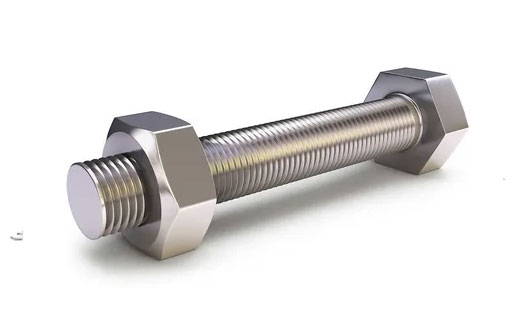Phone Number
+91-22-66287900


Stud bolts, nuts, machine bolts, and washers are also known as bolting materials or fasteners. Bolting is the term that is used to tighten/create the flange joint connection. The tightening of the flange ensures the leak-proof connection between the gasket & flanges. ASME flanges have a minimum of four bolt holes; for higher diameter flanges, the number of bolt holes is always in multiples of four. The selection of the number of bolt holes depends on the factor such as
Stud Bolt.
The stud has a thread on full lengths or at both ends. As shown in the images. It has three
components if washers are not used (two nuts and a stud). If you used a washer, it would become
five. Sometimes additional nuts are used for hydraulic tensioning with larger size studs.
The length of the stud bolt should be enough to cover the entire Nut plus 1.5 to 3 threads
exposed. Long studs must be avoided as it increases the chance of corrosion and other damage to
exposed threads, which would make subsequent removal difficult.
ASME B16.5 gives the required size of the stud. The length of the stud depends on the type of
gasket and the maximum exposed thread requirements.
Types of Stud Bolt.
Stud Bolts Standards.
Types of Stud Bolts.
For high-temperature and pressure services, ASTM A193 is the most widely used flange material. Grade B7 and B7M are the most frequently used A193 material grades. For low-temperature services, ASTM A320 Gr L7, L7A, and L7B are used. Other stud bolt materials include the following:
2B, 2D, HR, CR, BA (No. 8), Satin (Met with PVC Coated), No.1 Finish, No.4 Finish